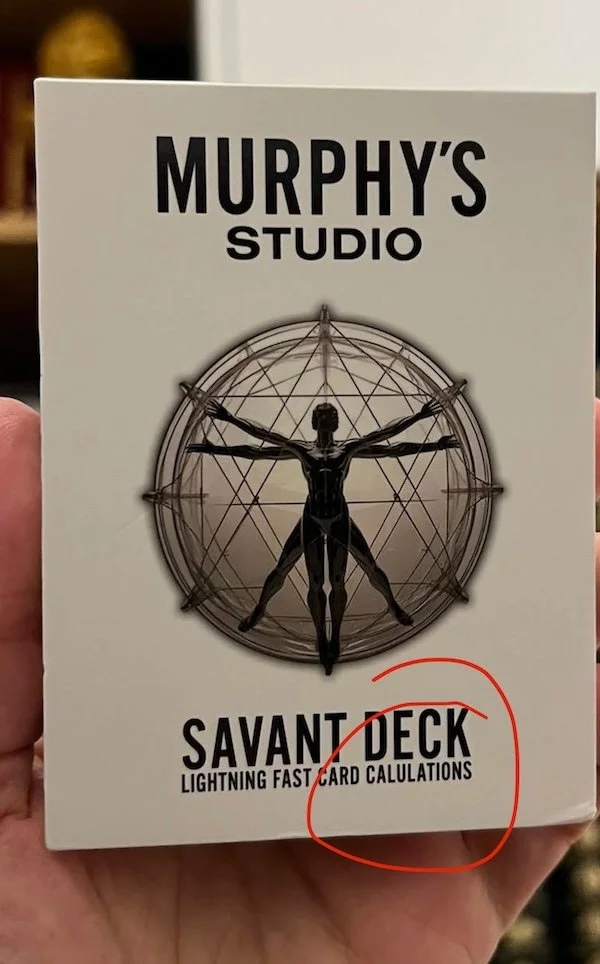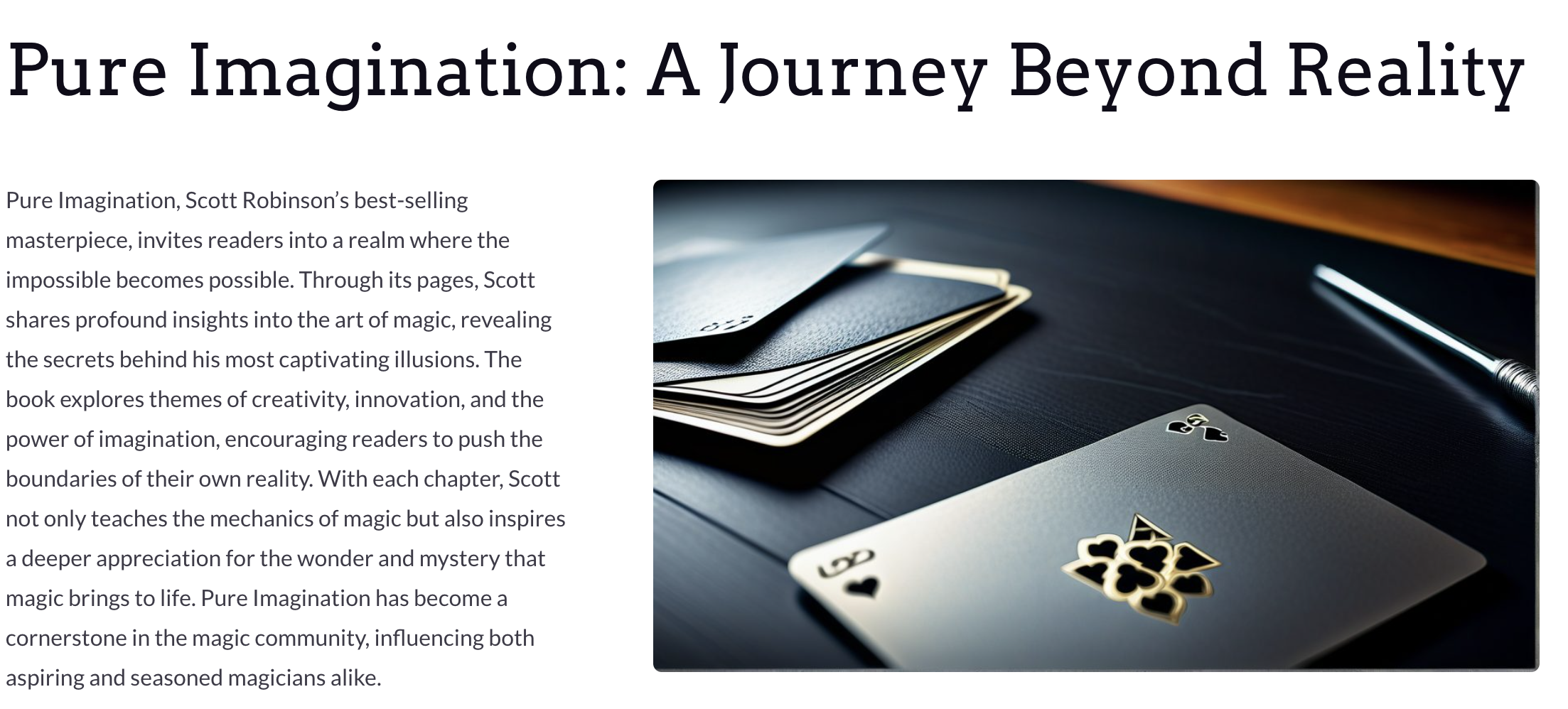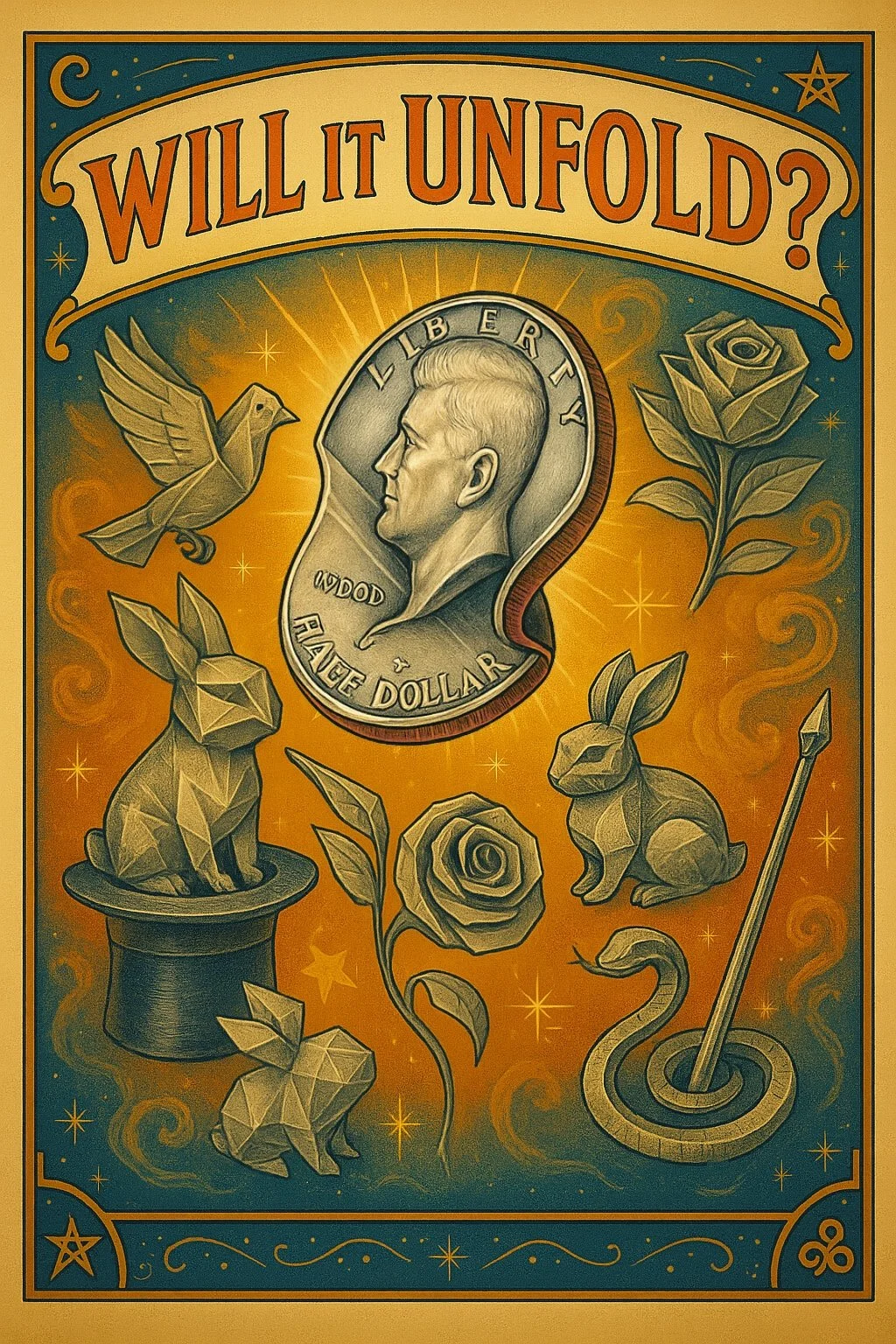Fencing
/I’ve got something very cool to share with you tomorrow. The routine I’m transcribing for it draws on a lot of techniques I’ve introduced before, and one new idea I want to talk about today.
In magic, methods almost always come with some kind of limitation:
The spectator can’t shuffle.
They have to write down the word they’re thinking of.
The magician has to use his own coins.
The mind-reading only works from a limited list of options.
And we—rightly—assume these limitations will draw suspicion.
But this technique goes a long way toward diffusing that suspicion entirely.
Imagine we have a trick where the deck can be cut, but it can’t be shuffled by the spectator.
Typically, you might say something like, “We need three random cards. So cut the deck anywhere you want, and we’ll take the next three cards.”
That feels somewhat fair. But they might be thinking:
“Does he know what cards are where in the deck?”
“Why are we taking three cards right next to each other?”
“Why can’t I just spread the deck and grab any three?”
Now, I’m not suggesting they’ll consciously think these fully-formed thoughts. But I do think if you say “we need three random cards” and then you do anything other than let them dig through the deck to pluck out three cards at random, then something about the process will feel more restrictive to them than necessary.
And that is the feeling we want to eliminate: the sense that what they’re experiencing is somehow more controlled or narrow than expected.
So how do we do that?
Like this:
“Okay, we need three random cards, so I’m going to cut to a random spot in the deck…”
[You carefully cut the deck at a particular point.]
“…and we’ll take the next three cards.”
Pause. At this point, the spectator is likely thinking: He probably knows where certain cards are in the deck. That’s why he cut them so carefully. I doubt these are really random cards.
Then you say: “Wait… actually, you cut the deck. As many times as you like. I’ll turn my back.”
When they’re done, you turn back around.
“Great—we’ll use the three cards from wherever you stopped.”
You see?
We established a baseline: I, the magician, will carefully cut the cards to a specific point myself and pull out three cards.
Then we gave them something that feels significantly more fair: Actually, you cut the deck as much or as little as you want, and then we’ll take the three cards from where you cut.
Taken alone, that second procedure might feel a bit controlled. But in contrast to what came before, it feels open, generous, and fair.
The emotional trajectory shifts. Instead of: “This feels less free than I expected,”
they’re thinking: “Oh… this is actually more fair than I thought it would be.”
That’s the technique: Establish tighter-than-necessary restrictions… then loosen them.
How else might we use this technique?
One
“I want you to think of either a cat, a dog, or a mouse. Got one?”
Hmm… a one-in-three guess isn’t that impressive.
“Actually… wait. Let’s make it harder. Think of a farm animal. Any animal you might find on a farm.”
Two
“Place the word you wrote face-down in my hand.”
Ah… he’s probably going to try to peek at what I wrote.
“Actually, let’s place it in my wallet instead. That way I can still hold onto it, but there’s no chance I could accidentally glimpse it.”
Three
“I want you to turn to…let me think…uhm… how about page 70. Go to page 70 in that book and look at the first word on the page.”
Huh… I wouldn’t be surprised if he already knows the word on page 70.
“Actually, let’s use this other book you chose to select a completely random page. I’ll flip through it, and you just say stop anywhere.”
Make sense?
Having them think of only a farm animal, having them place the business card in your wallet, having them choose a random page in a book by you flipping through a different book… those are all restrictions imposed by the method.
But by first creating tighter, unnecessary restrictions, then pulling back to the real ones, we generate a feeling of increased freedom.
The end result feels more open and more fair, even though it's still guided by the same underlying constraints.
This is such a crazy powerful technique. And when I hit on techniques like this, I always think, “Well, I can’t possibly be the first person to codify this.” If this idea is lying around in some magic theory book, let me know so I can properly credit it.
For now, I’m calling it Fencing.
That’s based on the Jewish concept of building a fence around the law, where you intentionally add extra rules or restrictions, not because they’re necessary, but to ensure you don’t even come close to breaking the actual rule.
Here we’re sort of flipping that concept. We create an unnecessary restriction… and then remove it. And that shift—from strict to less strict—is what we’re using to create the illusion of fairness.










